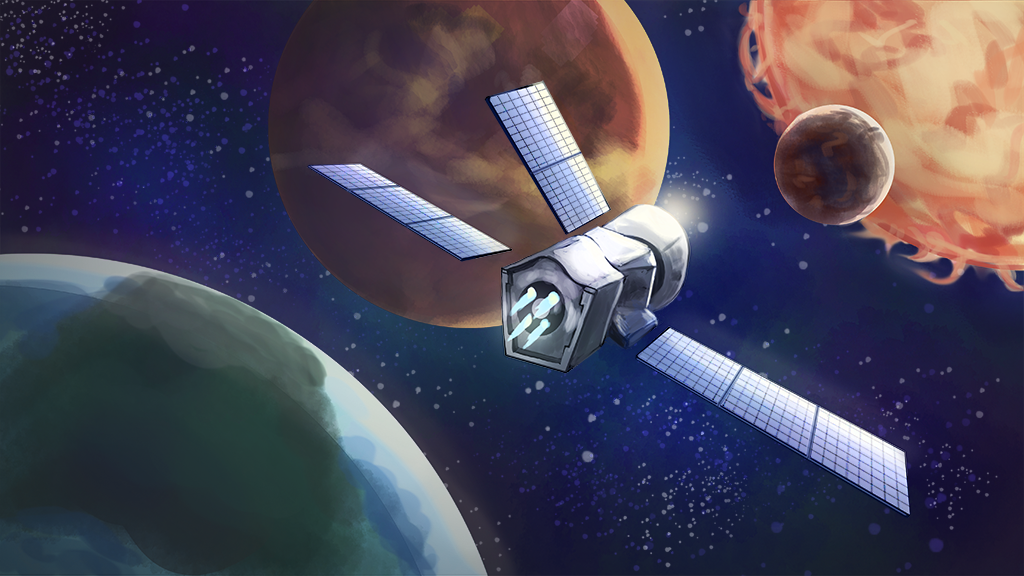An intrepid explorer took to the skies on Saturday, Oct. 20, 2018, in Kourou, French Guiana. Embarking upon a seven-year journey from Earth to Mercury, BepiColumbo will be doing two Venus fly-bys and six Mercury fly-bys before arriving in Mercury’s orbit in 2025.
“If someone proposes a mission to go study objects in space, all other things being equal I think that’s a fine idea,” said Dr. Michael Richmond, professor of Physics and Astronomy at RIT and director of the RIT observatory. “This is a mission to visit a planet that hasn’t been visited as many times as most, and so I think you can make a good case that there are a number of questions that remain to be answered, and so Mercury is a pretty good target.”
BepiColumbo is the product of 18 years of planning and coordination between the European Space Agency (ESA), and Japan Aerospace Exploration Agency (JAXA).This collaboration was a feat of bureaucracy as well as science.
“It requires a funding source that’s willing to provide money on a consistent basis on a long term period,” Richmond noted.
The scientific payload of the mission consisted of two parts, the Mercury Planetary Orbiter (MPO), and Mercury Magnetosphere Orbiter (MMO), nicknamed Mio. While most of the exciting images we’ll see of Mercury will come from the MPO, the data on Mercury’s magnetosphere gathered by Mio will be invaluable. Richmond described how the spacecraft will operate for this mission.
“The Japanese component will go into a high orbit, where it gets close to Mercury at its periapse [point of closest orbit], and then gets far, far away at its apoapse [point of furthest orbit], and it will be studying the magnetic fields and space environment around Mercury,” said Richmond. “While the European half will gradually lower its orbit so it's closer to the planet, so it can take images, measure thermal radiation, do spectroscopy, study the surface in detail.”
Thus, the collaboration between Japan and Europe is vital in making this mission a success, and the two agencies have both brought their own strengths to the mission. The ESA brought its administrative and public relations resources, while JAXA brought a particular sort of expertise in magnetosphere observation.
"It may be because they have particular strengths, and they do. The scientists and engineers of Japan have worked on more missions of the magnetic kind, than of the orbiting imaging kind. So it makes perfect sense looking at it that way," said Richmond.
It would be foolish to overlook the political implications of any large international scientific collaboration between government agencies.
"But also I wonder if there's any other bargaining that goes on in these big scientific and political sessions," said Richmond.
Mission Objectives
While Mio is surveying Mercury’s outermost reaches, the MPO will be gathering data about the structure of the planet’s surface, which will be accomplished through the use of a laser altimeter. This will then lead the spacecraft to gather data about Mercury’s topology. This happens simultaneously with the onboard spectrometers, which are sensitive to several regions of the electromagnetic spectrum. These spectrometers will gather data about the composition of the surface and atmosphere.
“So spectrometers basically take incoming light, usually, and split it up into many channels, and they measure the spectrum of that light, and from that you can infer things,” said Dr. John Kerekes, a professor of Imaging Science at RIT and director of the Digital Imaging and Remote Sensing Laboratory.
Just as each song has a unique mix of audio frequencies, every material reflects a unique mix of electromagnetic frequencies, which enables us to use spectroscopy to identify what materials are present.
“The light reflects off the planet and goes into the instrument and in the case of looking at the Earth or any planet that has an atmosphere, it’s a combination of things that are reflected from the atmosphere, as well as the surface." Kerekes said. "But other materials have other unique kinds of characteristics. So spectrometers are most often used to determine what materials are present ... so there’s a lot of complexity behind interpreting the data to attribute it to a certain material.”
The engineering of its instrumentation needs to be precise, while also able to withstand the massive forces required to escape the Earth’s gravity. Fortunately, decades of prior work in the field have made ensuring this delicate instrumentation can survive such forces fairly straightforward.
“The optical instruments tend to need very precise alignment and careful manufacture, because light is on the order of a micron [one millionth of a meter] in wavelength, and so you often need alignment to that kind of scale, and when you’re launching it on a rocket, it’s sitting on top of a bomb, and those instruments get shaken up as part of the launch process, and so what manufacturers do to mitigate any risks associated with that is they put the instruments, after they’ve been assembled and tested, the put them in, on a shaker table, and they shake it, with the same kind of g-forces that the instrument is expected to receive upon launch,” Kerekes pointed out.
Though Mercury doesn’t tend to receive as much attention as the likes of red Mars and giant Jupiter. There is still much to be learned about this fiery little world, from details of its composition, to how it has managed to maintain some semblance of a magnetic field. These are the questions BepiColumbo is equipped to answer.








